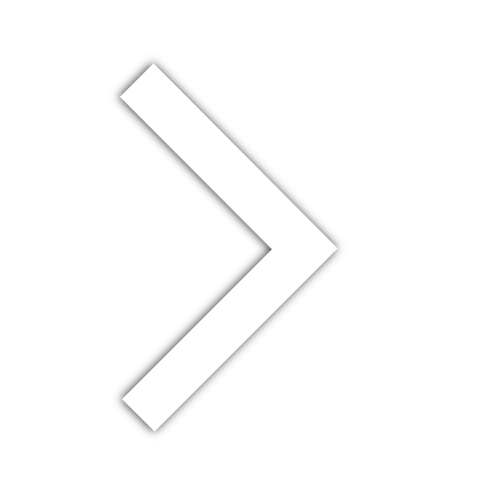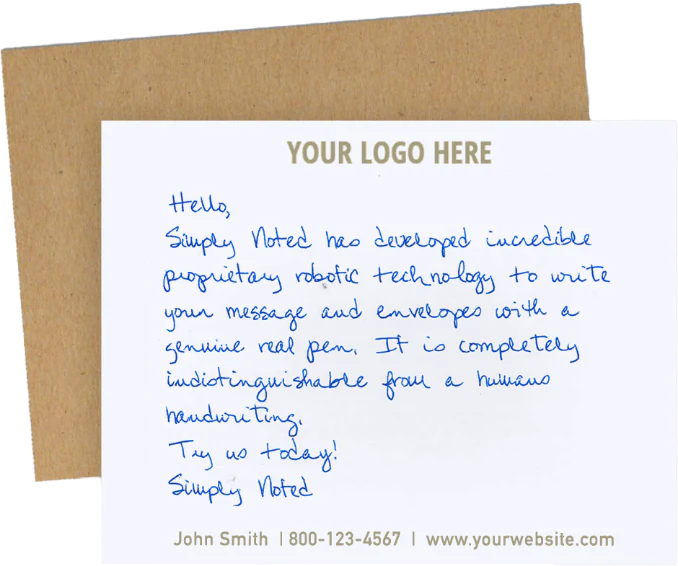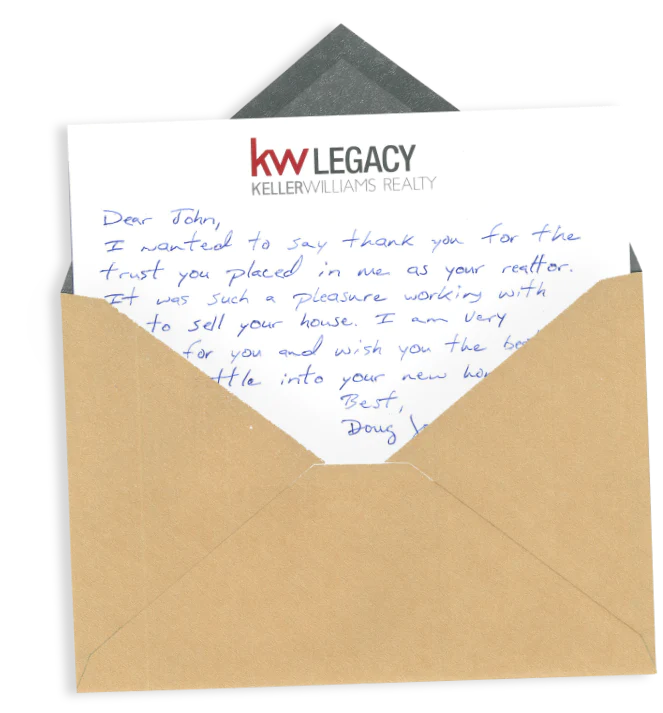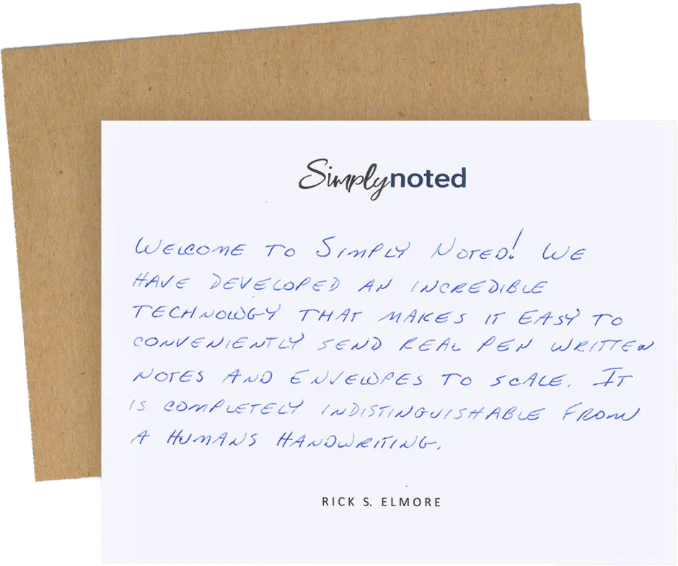4 Reasons B2B Companies are Turning to Handwritten Notes to Drive Sales

When was the last time you sent someone a handwritten note? Now how about in a business context? If we had to guess, we’d bet your answer is something like, “I don’t know,” “It’s been a long time,” or “What’s a handwritten note?”
These aren’t uncommon responses. Once the preferred method for connecting with friends, family, and customers, the handwritten note has mostly fallen into obscurity, pushed out by easier, instantaneous communication platforms like email, social media, and text messages. In the proper context, these alternatives are beneficial, but they don’t hold a candle to handwritten notes when it comes to driving sales.
Increasingly, businesses are realizing the power of the humble handwritten note to generate interest, convert more prospects, and realize greater profitability. This is true for B2C companies that speak directly to consumers, but also for B2B organizations. This article will focus on four reasons why smart B2B companies are mailing handwritten notes and seeing dramatic gains.
SEE ALSO: Why Are Handwritten Notes So Important?

DECISION MAKERS READ HANDWRITTEN NOTES
As you’re no doubt aware, you aren’t the only person trying to contact key decision-makers. And they certainly aren’t sitting by their phone or perched in front of their computer waiting for you to contact them. Their time is limited, and they’re inundated by emails, chat messages, phone calls, day in and day out. If you’re trying the same tactics as everyone else to reach these people, your efforts will dissolve into background noise.
Out of the hundreds of emails they get each day, why would they read yours?
By contrast, handwritten notes are unique. More importantly, they’re rare. While your desired contacts are fighting a daily battle against cluttered inboxs and multiplying voicemails, they might get one handwritten card — a month. They’ll notice it, and if that handwritten note is yours, they’ll open it and read it.
Not for nothing, but handwritten cards enjoy a staggering 99% open rate. Compared to that, no other tactic comes close. Handwritten notes, slipped in mailboxes, open doors.
HANDWRITTEN NOTES HUMANIZE YOUR SALES MESSAGES
B2B stands for “business to business.” We all know this. However, we forget that we aren’t sending marketing messages to businesses. We’re approaching the people that work at those businesses. In this way, B2C and B2B marketing is exactly the same — you’re trying to convince people to do business with you.
B2B marketers often forget the value of personalized communication channels because they approach their marketing as if they’re speaking to an organization. Making the mental shift from “business to business” to “person to person” can be difficult, but it’s critical to maximizing your results.
Handwritten notes can profoundly impact their readers because, unlike sales emails, they feel like they were written just for their recipient. The person receiving your note assumes you spent time crafting the message and then writing it out by hand. They value the effort they imagine you expended in their honor. Your sales messages are elevated when they feel personalized, and handwritten notes are the best way to accomplish that.

THEY COMPLEMENT A SOFT-SELL APPROACH
It’s been decades since salespeople realized that the hard-sell approach doesn’t work. Yes, it might land them one deal, but that sale probably came to them so they’d finally shut up, and it was unlikely to result in repeat business.
The soft-sell approach focuses on building relationships and being there for prospects and customers long-term so that the salesperson becomes a respected, sought after partner. With a soft-sell, your process takes longer, but the results are lifelong customers.
Handwritten notes are the perfect tactic for a soft-sell approach because people already associate them with close personal friendships. Typically handwritten cards only arrive from family members and other loved ones. B2B businesses can use this association to nurture their leads and care for existing relationships.
SEE ALSO: Should a Thank You Note Be Handwritten?
HANDWRITTEN NOTES ARE MORE COST-EFFECTIVE
We already know that handwritten notes are read nearly 100% of the time. Higher readership rates translate to bigger responses, more leads, and increased conversions. The better your response rate, the more money you can make from the same investment. Let’s look at an example.
Take 5,000 traditional printed mailers and 5,000 handwritten mail pieces. The traditional mailers cost $2.50 each, while the handwritten notes runs $3.00. These figures translate to a total investment of $12,500 for printed pieces and $15,000 for handwritten. The handwritten notes do cost more, but what’s important is how much money each tactic will return.
Standard printed direct mail offers a 5% response on average. Out of the 5,000 mailers you send, you can expect about 250 leads. Divide your initial investment by your total leads, and you find each lead costs you $50.
Handwritten direct mail enjoys a much better response rate. At 20%, you’ll receive about 1,000 leads from your original 5,000 notes — four times as many! That reduces your cost per lead down to $15. Your ROI is 300% higher with handwritten notes.
SEE ALSO: How To Send A Handwritten Card Online

SIMPLY NOTED HELPS YOU REALIZE THE POTENTIAL OF HANDWRITTEN NOTES IN A BIG WAY!
At its most basic, handwritten notes lack one basic feature that digital channels, like email, have always enjoyed — automation. With email campaigns, you can segment your audience and use marketing automation to send personalized communications automatically. Entire workflows are possible, guiding leads through what can be an elaborate conversion process.
Handwritten emails — classically at least — have to be written by hand, making them labor-intensive and impossible to automate. But that’s no longer the case.
Simply Noted is a leader in automated handwriting. We’ve built a fleet of the most advanced handwriting machines on the planet. Using our powerful integrations, you can now mail authentic-feeling handwritten notes the same way you might have sent an email in the past — segmentation, personalization, and automation are all here!
And the best is about to get better. Soon we’ll be rolling out Infinity fonts, our latest innovation. These handwriting fonts replicate the subtlest details that distinguish real handwriting from artificial recreations. You could be forgiven for forgetting that you didn’t write them yourself when you see such a convincing illusion.
With Simply Noted, you can send tens of thousands of handwritten cards or more, each personalized to its recipient, in no time flat. We make handwritten notes work for businesses around the world, and we can do it for you.























